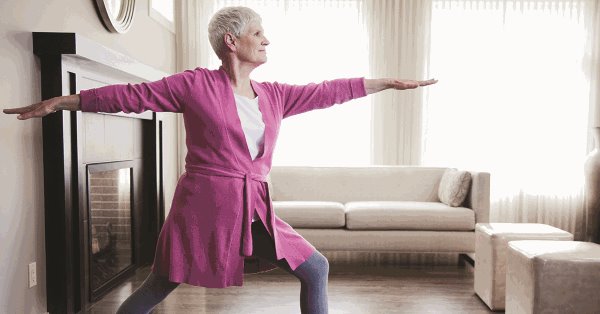 Osteoarthritis and rheumatoid arthritis are the two most common types of arthritis. According to the Centers for Disease Control and Prevention, more than 30 million U.S. adults suffer from osteoarthritis. This condition is also known as degenerative joint disease, and it mainly occurs in the:
Osteoarthritis and rheumatoid arthritis are the two most common types of arthritis. According to the Centers for Disease Control and Prevention, more than 30 million U.S. adults suffer from osteoarthritis. This condition is also known as degenerative joint disease, and it mainly occurs in the:
- Hands
- Hips
- Knees
Rheumatoid arthritis on the other hand is an autoimmune and inflammatory disease and causes painful swelling in the affected parts of the body. It mainly occurs in the:
- Hands
- Knees
- Wrists
Both osteoarthritis and rheumatoid arthritis can be painful and cause your loved one’s body to be stiff and achy. It’s important to know how to protect a loved one’s joints as they age and use strategies such as exercise to relieve their discomfort.
Exercises to relieve arthritis discomfort
As we age, everyone experiences some degree of osteoarthritic changes in their joints. With osteoarthritis, the cartilage within a joint starts to break down, and the underlying bone changes. The joint disease develops slowly and worsens over time. Some older adults can even have reduced function and possible disability as a result of osteoarthritis.
Rheumatoid arthritis is the result of the body’s immune system attacking healthy cells. It attacks the joints and leads to damage in the joint tissue. The tissue damage can cause long-lasting or chronic pain, lack of balance, and deformity. People with rheumatoid arthritis also commonly experience more systemic symptoms such as fatigue, malaise, etc. and may require a specialized exercise regimen, so be sure to consult your healthcare provider.
Exercise is the most effective nondrug treatment for reducing pain and improving range of motion for loved ones suffering from various forms of arthritis, according to the Arthritis Foundation. Joint-friendly physical activities place less stress on the body and reduce the risk of injury. Helpful exercise options include:
- Tai chi and yoga: Tai chi and yoga use deep breathing, flowing movements, gentle poses, and meditation. They can increase flexibility and balance and reduce stress in your loved one’s life.
- Walking: Walking is an excellent exercise, and it’s accessible for most older adults. It will improve your loved one’s circulation, lower their blood pressure and ease their joint pain. It is essential for them to wear proper shoes, dress properly for the weather and stay hydrated. Encourage your loved one to swing their arms while they walk for better balance and additional exercise benefits.
- Water exercises: Water exercises are gentle on your loved one’s joints. Swimming and water aerobics can increase flexibility, range of motion and strength while reducing joint stress and stiffness.
Your loved one should stay as active as their health allows and adjust their activity depending on their symptoms. You can also help manage the pain in their joints with heat and cold. Heat can relieve stiffness, and cold can relieve muscle spasms and pain.
Also, your loved one’s joints may be stiff after waking up in the morning or after sitting in a chair for an extended period. Simple range-of-motion exercises and positioning will make it easier for them to get out of bed or up from a chair.
While still in bed, have your loved one lay flat on their back and make progressive, simple motions of their joints from head to toe or toe to head. They can perform movements such as making a fist with their hand and releasing it or curling their toes and releasing them. Making these motions for five to ten minutes each morning will help loosen your loved one’s joints.
When sitting in a chair, make sure your loved one is well positioned and has all their joints supported. Their back should be against the back of the chair or couch. It’s also important that their shoulders and elbows are in proper alignment. Propping their arms on a pillow can be helpful. Support legs with a pillow, wedge or ottoman. All of these easy adjustments can decrease your loved one’s pain and make it easier to get up from the chair.
A team approach to maintaining motion
Having arthritis doesn’t mean your loved one needs to be in bed or a chair all day. BrightStar Care can assist a client with simple and more complex exercise routines. Our caregivers can assist with walking, or they can accompany clients, driving them if needed, to the gym or pool for exercises.
A BrightStar Care professional caregiver can also conduct “sit and be fit” chair-based exercises in the home and do range of motion exercises with clients to keep joints limber. If physician-ordered therapies are needed, BrightStar Care can arrange for a physical or occupational therapist to carry out the prescribed treatments.
Working with an in-home caregiver can help people with arthritis manage their pain and maintain more independence. To learn how your loved one might benefit from our expert in-home care team, call 866-618-7827 or contact a BrightStar Care® home care agency near you.
